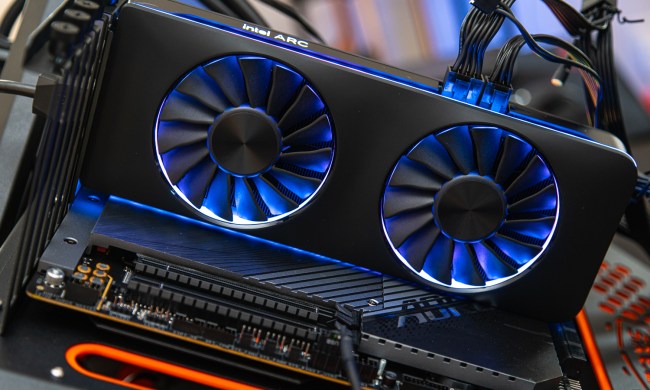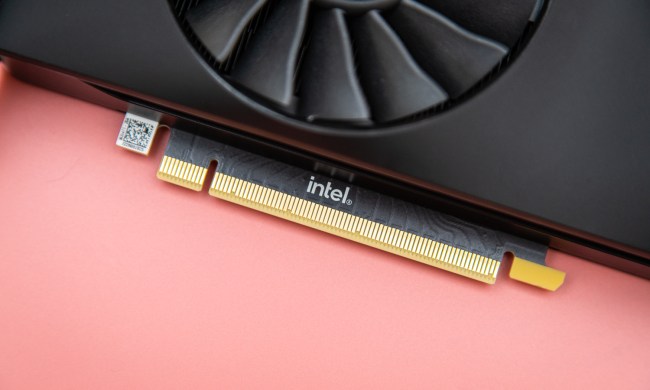Intel’s Tom Petersen and Ryan Shrout have reunited once again for another round of insights into Intel Arc. This time, they delivered a deep dive into the upcoming Intel XeSS technology, which will be Intel’s response to Nvidia’s DLSS.
The tech has long been expected, but it seems that Intel is planning to launch it soon. More importantly, based on the tests provided by Shrout and Petersen, Intel XeSS might be able to serve up a serious performance boost.
Intel XeSS is an upscaling feature found in the Arc Alchemist graphics cards that are slowly making their way to the market. It initially renders your game at a lower resolution and then uses machine learning (ML) and artificial intelligence (AI) to boost your performance while still maintaining good image quality. Nvidia and AMD have similar technologies, Nvidia DLSS and AMD FSR.
We’ve been waiting for Intel XeSS for quite some time — it was initially meant to launch on May 20 after first being teased in 2021. Much like the Arc GPUs themselves, Intel XeSS has been slow to arrive, but now, the company is preparing to launch it properly.
In the video, Intel explains that it wants “the best of both worlds” with XeSS — fast rendering and high resolutions all in one package. To achieve this, it plans to utilize AI to boost the super sampling process.
Before we begin, it’s worth noting that Intel XeSS will feature the following four modes:
- Ultra Quality
- Quality
- Balanced
- Performance
Ultra Quality mode focuses on image quality as opposed to frames per second (fps). Going down the list brings the focus more toward performance than image quality.
To show off the Intel XeSS technology alongside an Arc GPU, both Petersen and Shrout played Shadow of the Tomb Raider. They both used similar computers with the flagship Arc A770 GPU and ran the game with ray tracing enabled, at 1440p, and on max settings. However, Petersen used the Balanced mode while Shrout played on native resolution without supersampling.
Using XeSS delivered a tangible boost in performance; Petersen managed to hit up to 80 fps in Balanced mode while Shrout’s PC struggled to achieve a stable 50 fps. Using Performance mode brings those numbers even further, delivering up to 2.11 times the frame rates of running the game without XeSS.

Beyond talking about the technology itself, Petersen and Shrout revealed that over 20 games will support Intel XeSS. The full list includes:
- Anvil Vault Breakers
- Arcadegeddon
- CHORUS
- Call of Duty: Modern Warfare II
- Chivalry II
- Death Stranding: Director’s Cut
- DioField Chronicle
- Dolmen
- Ghostbusters Spirits Unleashed
- Ghostwire Tokyo
- Gotham Knights
- Hitman III
- Naraka: Bladepoint
- Redout 2
- Shadow of The Tomb Raider
- Super People
- The Riftbreaker
- The Settlers
- Vampire the Masquerade: Bloodhunt
We’ve also heard from Ubisoft that Skull and Bones will be among the first games to support Nvidia DLSS, AMD FSR, and Intel XeSS when it launches on November 8. This gives us a fun little teaser — November 8 just might be the deadline for Intel to introduce XeSS. Intel is also already working with the developers of Instinction, a dinosaur-themed game set to release in 2025.
Intel plans to make XeSS open to all developers to make it easier to integrate within upcoming and existing titles. It has also teamed up with the creators of the popular 3DMark benchmarking tools to make a new tool known as XeSS Feature Test. This tool will be available on all graphics cards, not just Intel Arc, and it will highlight the benefits of XeSS by offering a side-by-side image and performance comparison.
In the meantime, we’re still waiting for the global launch of the Intel Arc flagships. Intel has recently released the Arc A380 in the U.S., so hopefully, it won’t be long now. Intel XeSS also doesn’t have an official release date just yet.




